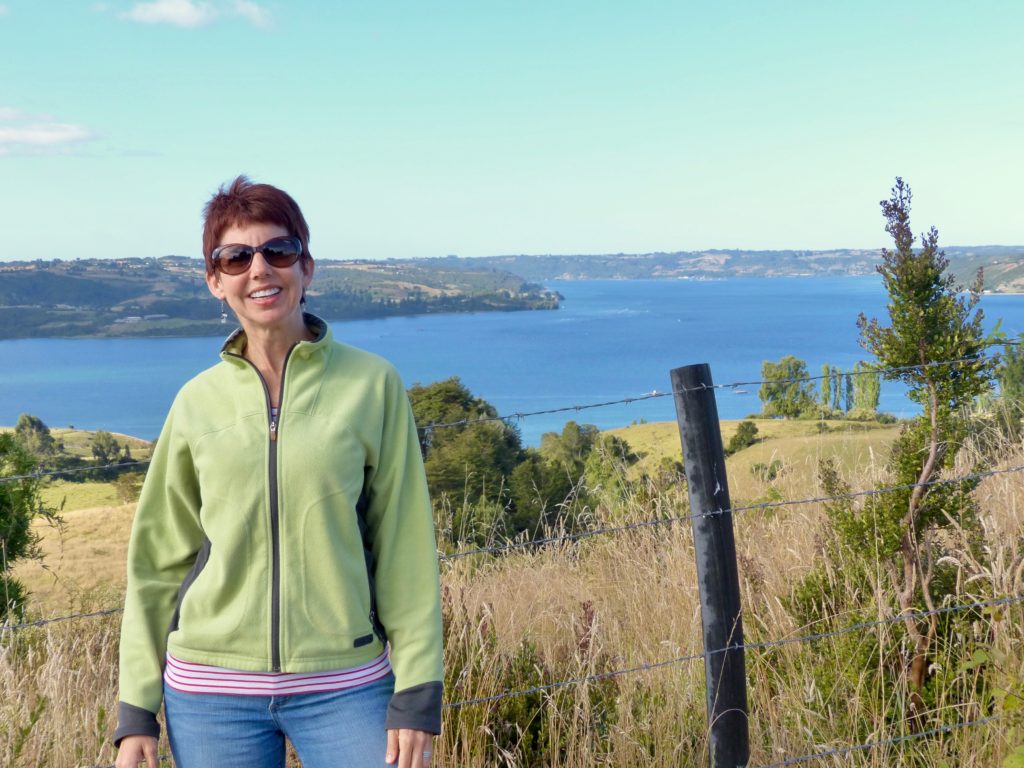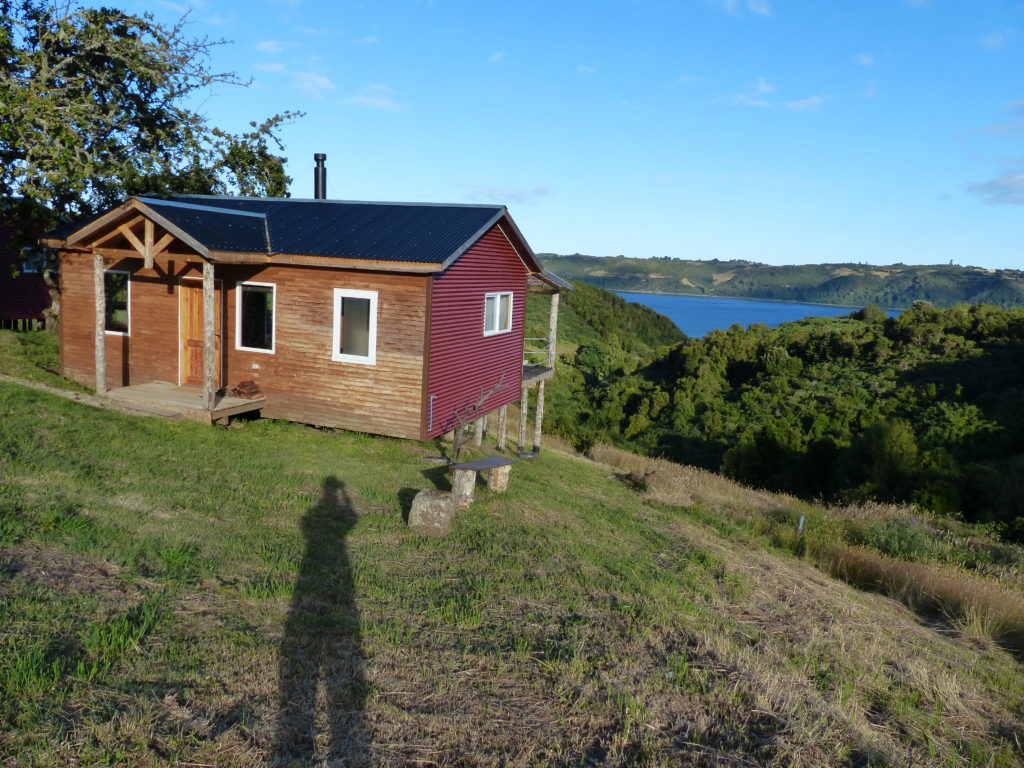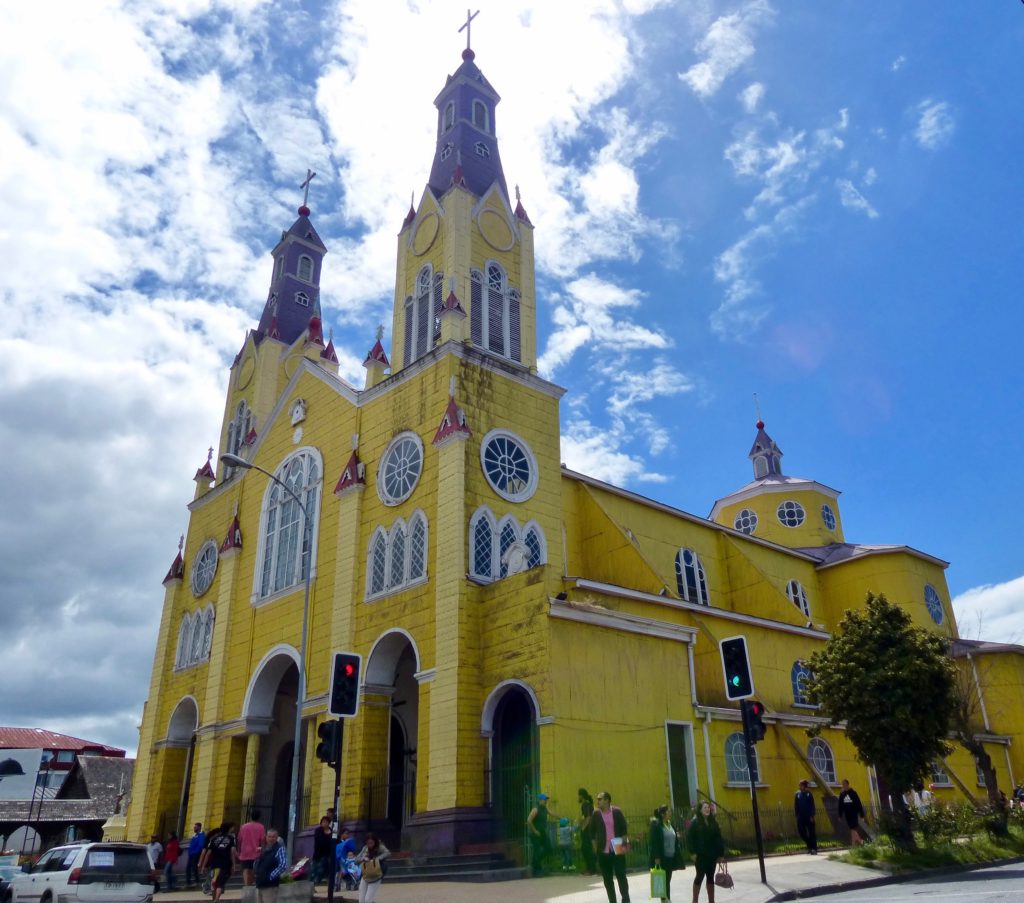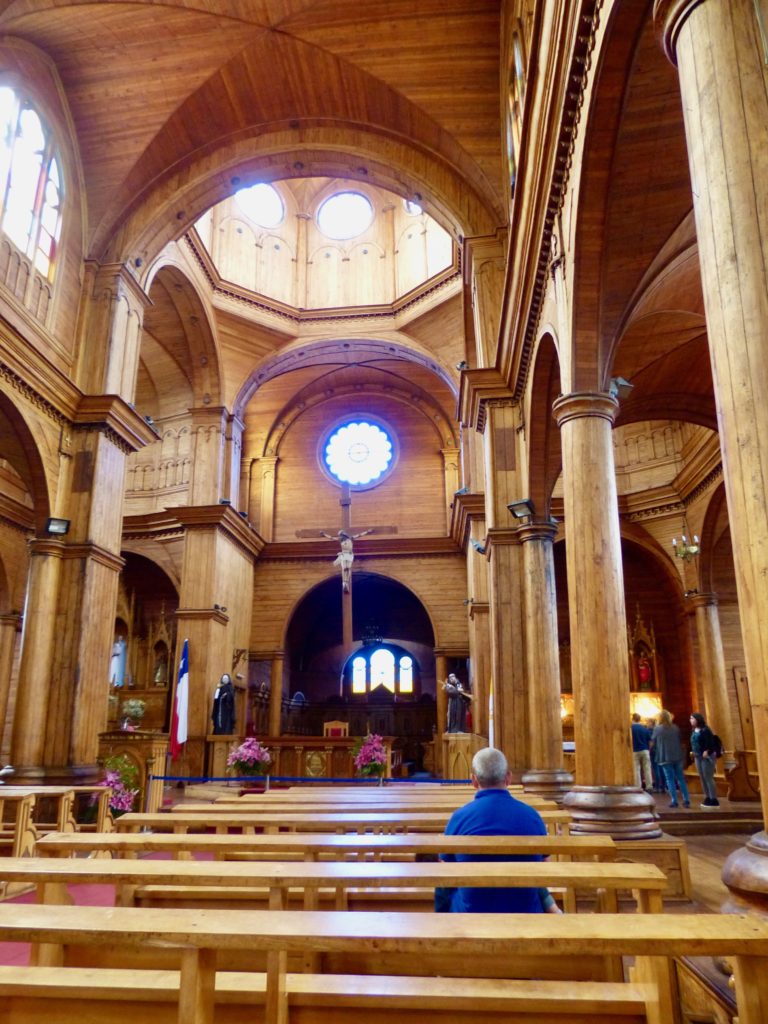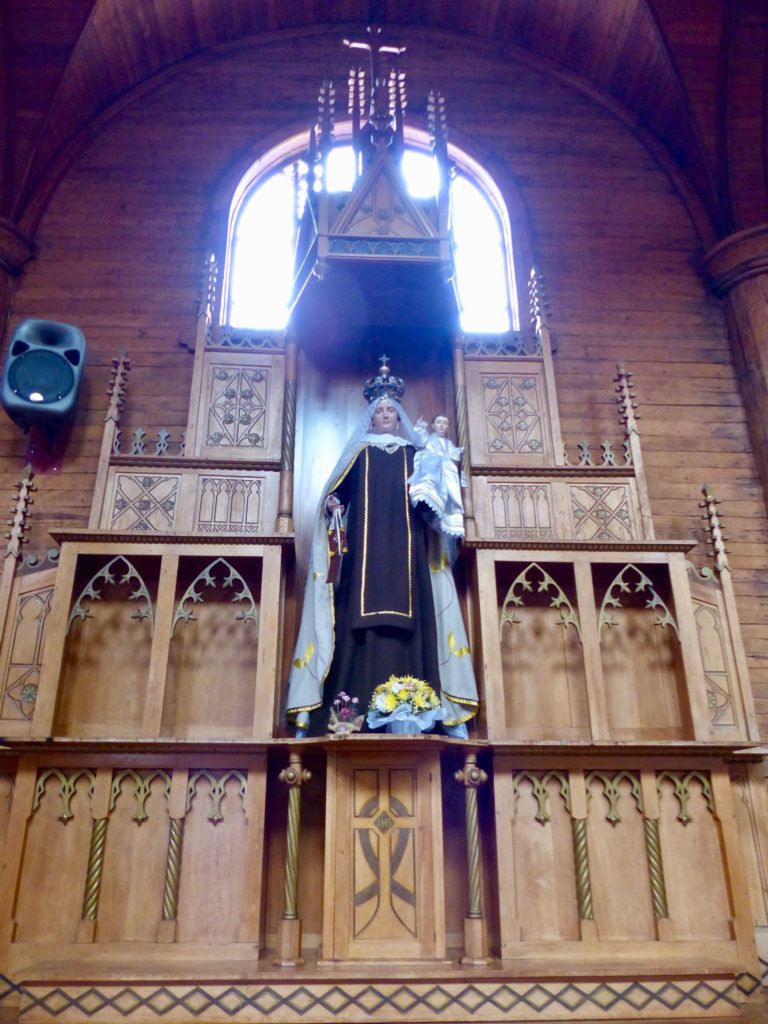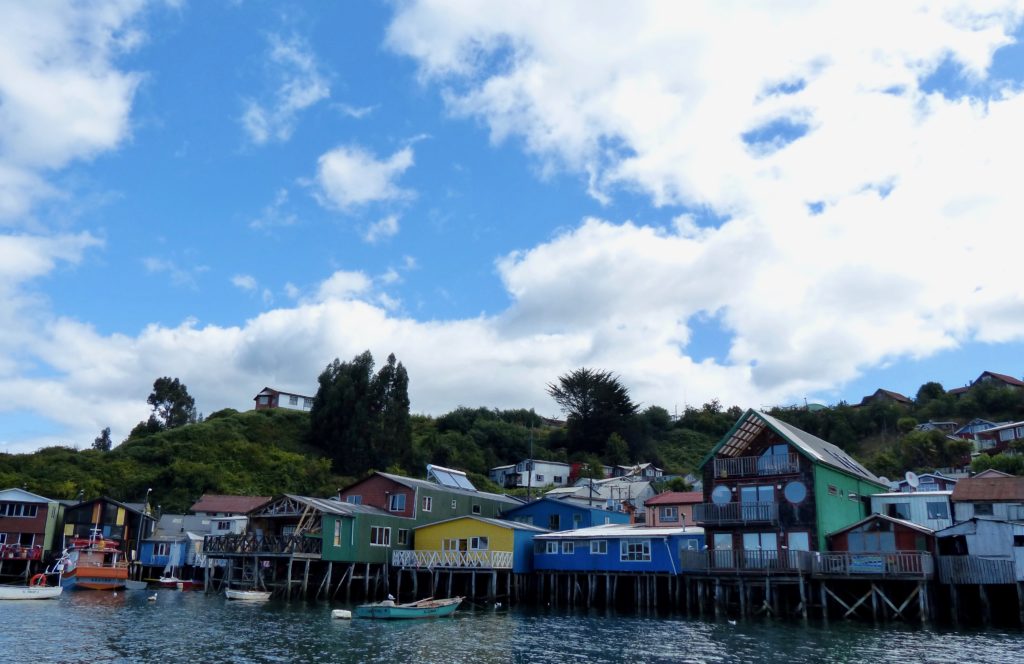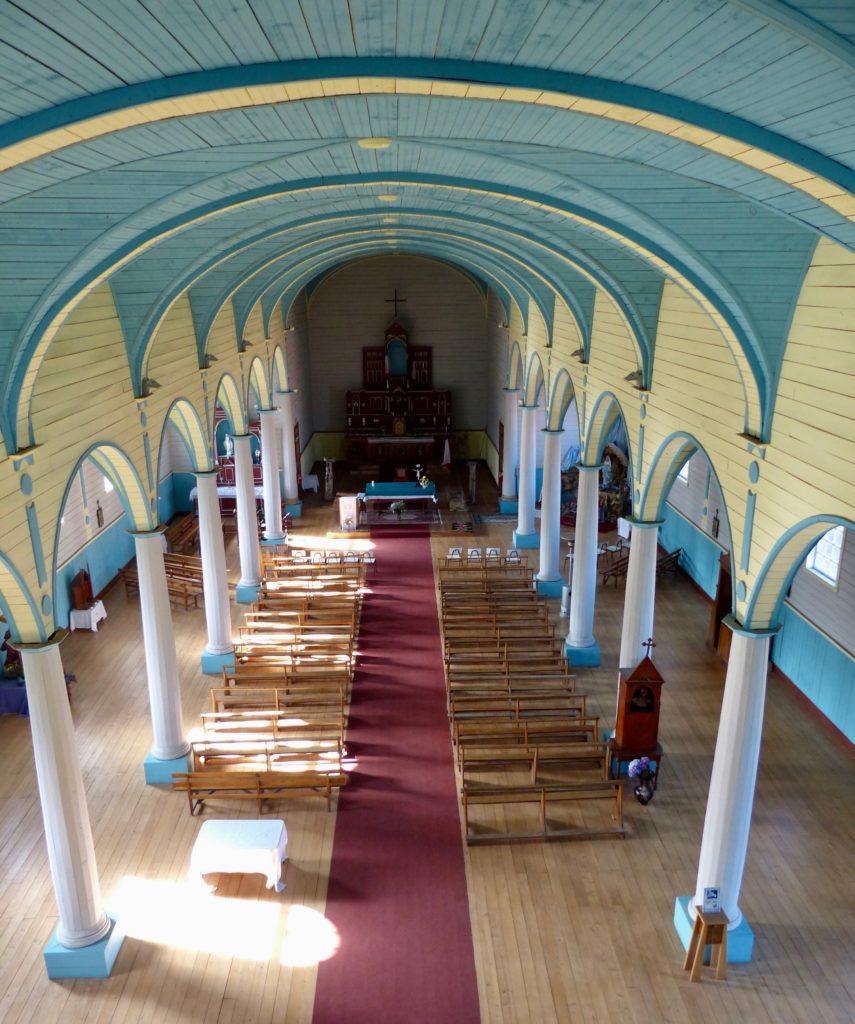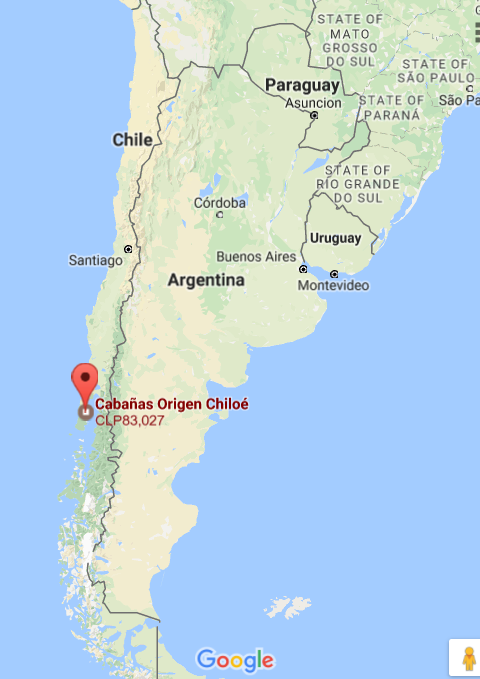With just two weeks left in our “summer” vacation, I took off with my friend Brie for cooler temperatures, fresh air, and adventure in a different part of the country. We flew to Chiloé, an archipelago off the southern coast of Chile about 765 miles south of Santiago, and stayed in cabins on the largest island, Isla Grande de Chiloé.
I honestly couldn’t remember the last time life was this peaceful. Hanging out at my cabin at Cabañas Origen Chiloé, I looked out at the Gulf of Corcovado and another island in the Chiloe archipelago (Quinchao), and I heard only the sounds of birds and cows, tree branches brushing against the roof, and the gentle hum of the kitchenette fridge.
Brie and I took this selfie on my cabin’s back porch.
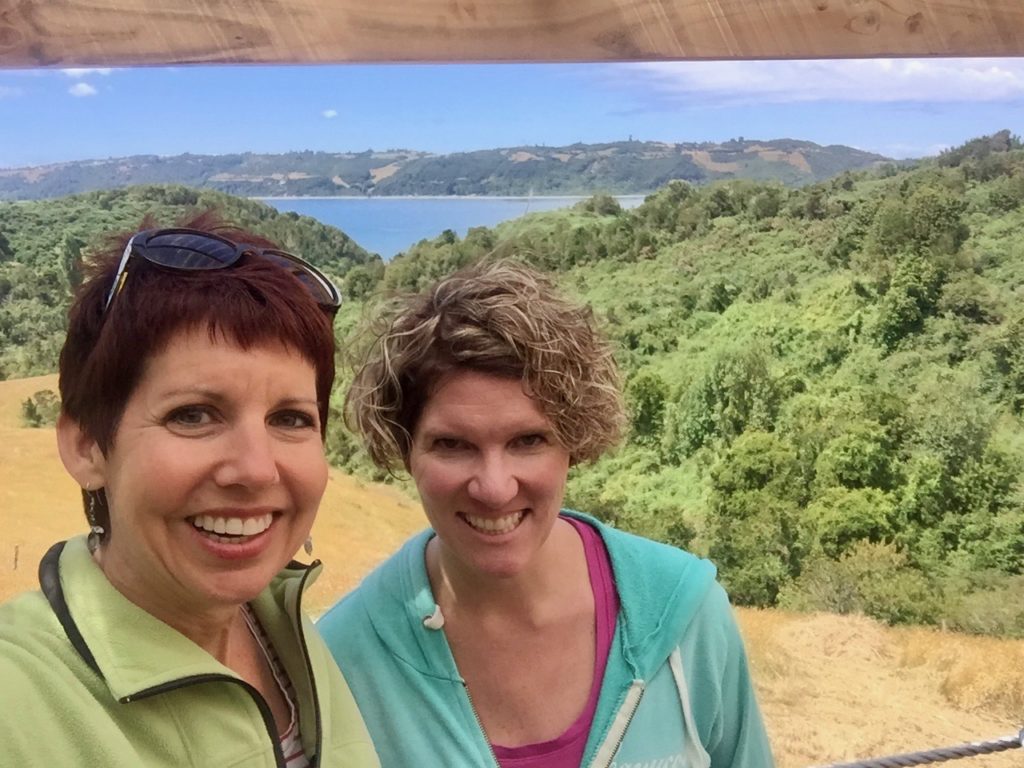
Each evening, the property owner, Jorge, brought us a breadbox full of breakfast for the next morning. He said everything, including the butter and cheese, was made from scratch by his wife. There was always a delicious dish to be warmed up in the microwave: an empanada (pastry stuffed with savory filling), chochoca (potato flatbread wrapped around pork chitlings), or milcao (a stuffed potato pancake). The breakfast box also included a couple types of bread, butter and jam or cheese, and something sweet, like an apple tart, a buttery coffee cake, or an alfajor (a sweet cookie sandwich filled with manjar, carmelized milk similar to dulce de leche). The only disappointment was the lack of good coffee. Instant would have to do.
Jorge also welcomed us to eat the apples off the trees.
After checking in and getting settled in our cabañas, Brie and I drove the short distance to Rucalaf for lunch. The restaurant had a sweet little playground in the front, but any kid who dared to tackle that steep wooden slide surely hit the ground with a bootie full of splinters!
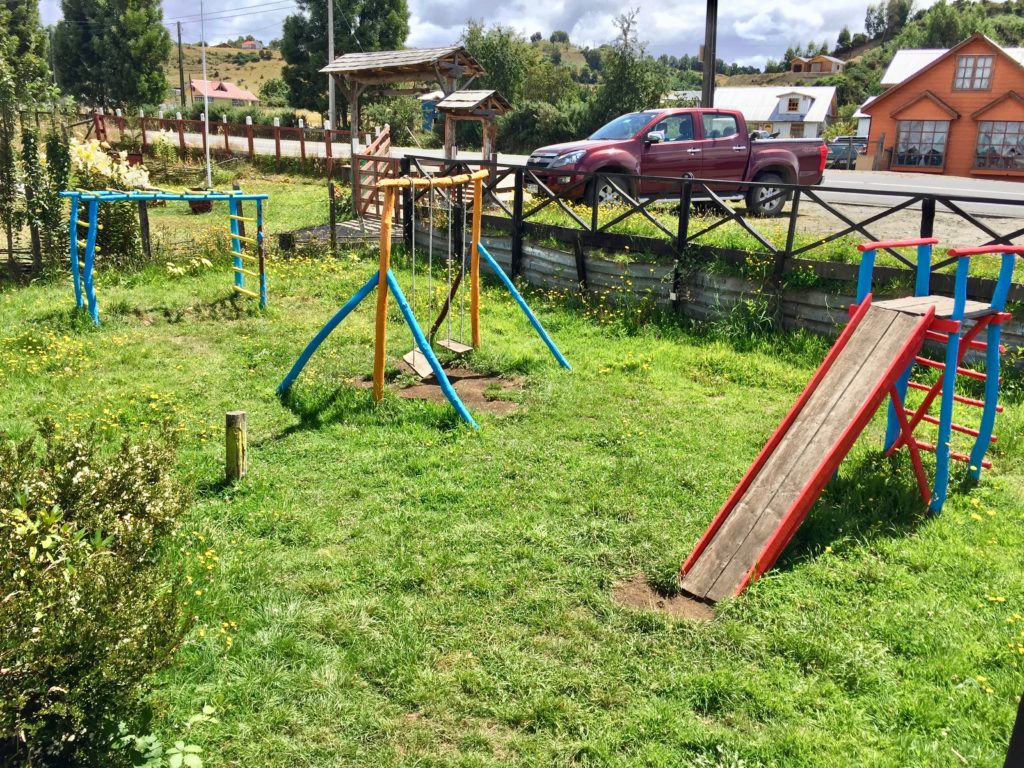
I ordered chochoca rellena, which was described in the menu as “a traditional dish of potato dough stuffed with the daily seafood catch and a sauce of white wine, butter, Chilote garlic, and smoked mussels.” What a special treat!
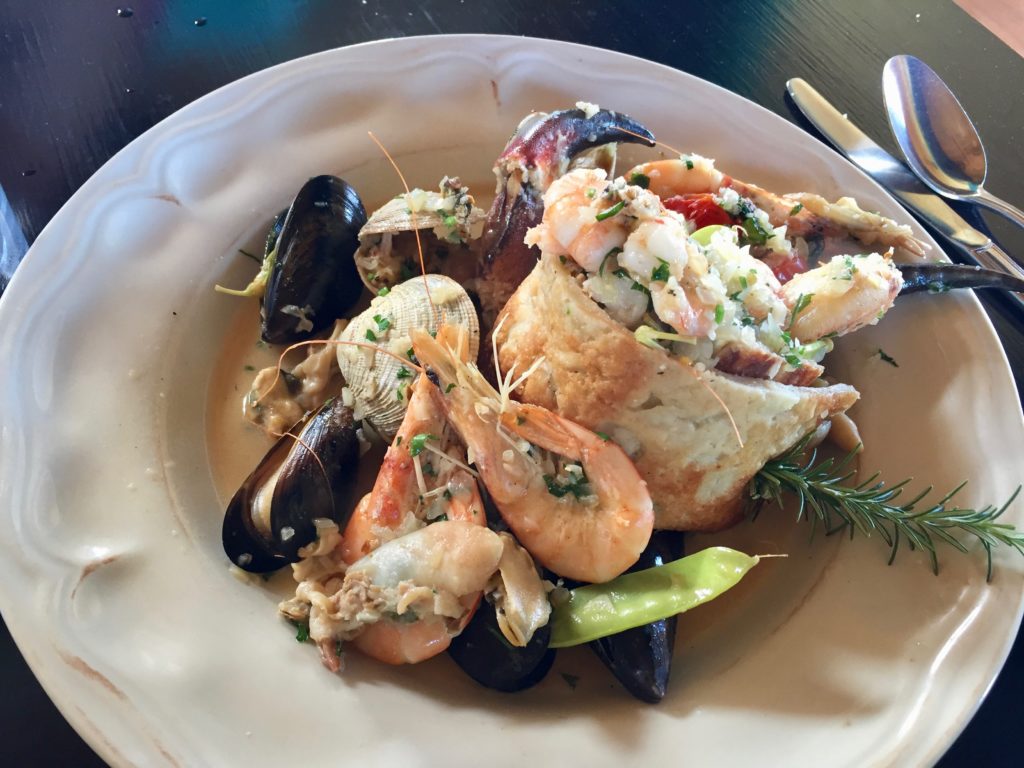
Brie got the pulmay de la Casa, a form of curanto cooked in a pot. Curanto is probably Chiloé’s most famous traditional dish: A hole is dug in the ground and lined with hot stones. Seafood, meat, potatoes, vegetables, and just about any other edible item can be tossed in. The whole mixture is covered with rhubarb leaves held down by chunks of earth, and left to steam.
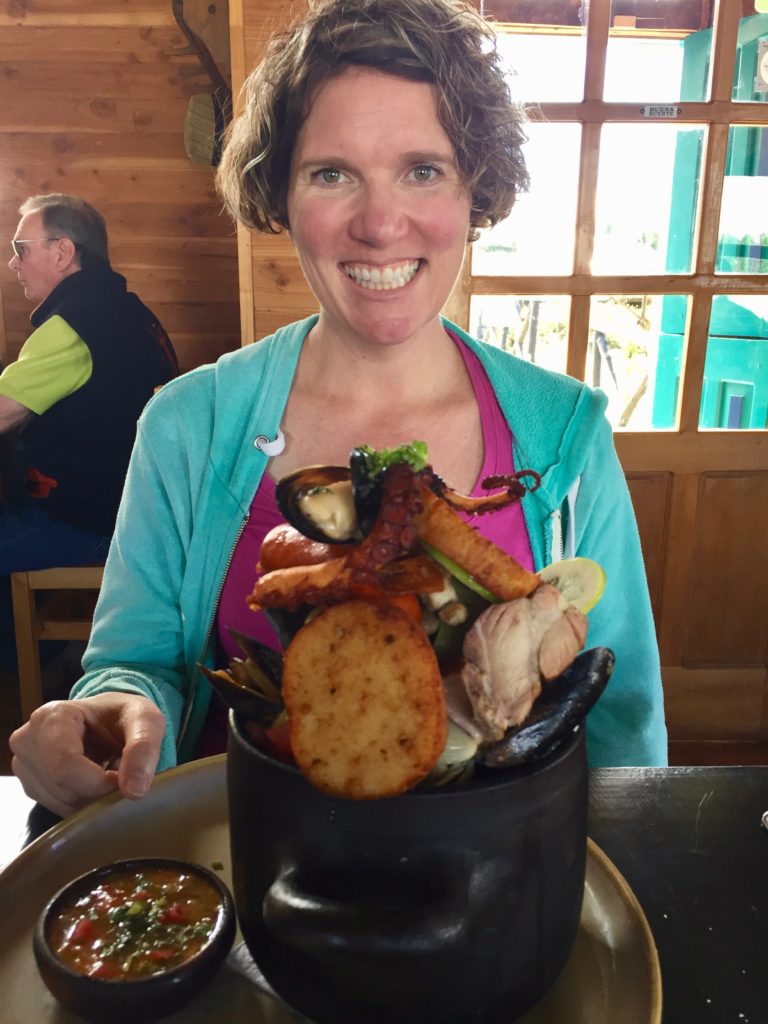
Obviously, there would be no need for dinner.
Our first destination in our Chiloé exploration was the city of Castro. According to Rough Guides,
“Castro has had its fair share of difficulties through the centuries. It was sacked by the Dutch both in 1600 and then in 1643, destroyed by earthquake in 1646, by fire in 1729, by earthquake again in 1739, by fire again in 1890, by fire once more in 1936, and most recently by earthquake and tidal wave in 1960. Anyone else would have given up and moved long ago, but the Chilotes keep hanging on.”
In Castro, we visited Iglesia de San Francisco, one of 16 Catholic churches in Chiloé listed on the UNESCO World Heritage List. When Jesuits landed here in 1608, they used local carpenters and ship builders to construct churches entirely out of wood. Of the more than 150 wooden churches that once dotted the archipelago, only about 60 remain. UNESCO says the churches “are outstanding examples of the successful fusion of European and indigenous cultural traditions.”
The Iglesia de San Francisco burnt down and was rebuilt several times before this version, which was completed in 1912.
Brie and I walked down the steep hill to the harbor to check out the famous palafitos, buildings on stilts along the water’s edge. We were ushered aboard a small boat full of tourists in lifejackets for a short cruise along Castro’s coast. A tour guide shouted anecdotes to the group, but the wind swallowed his words, and Brie struggled to hear him well enough to translate.
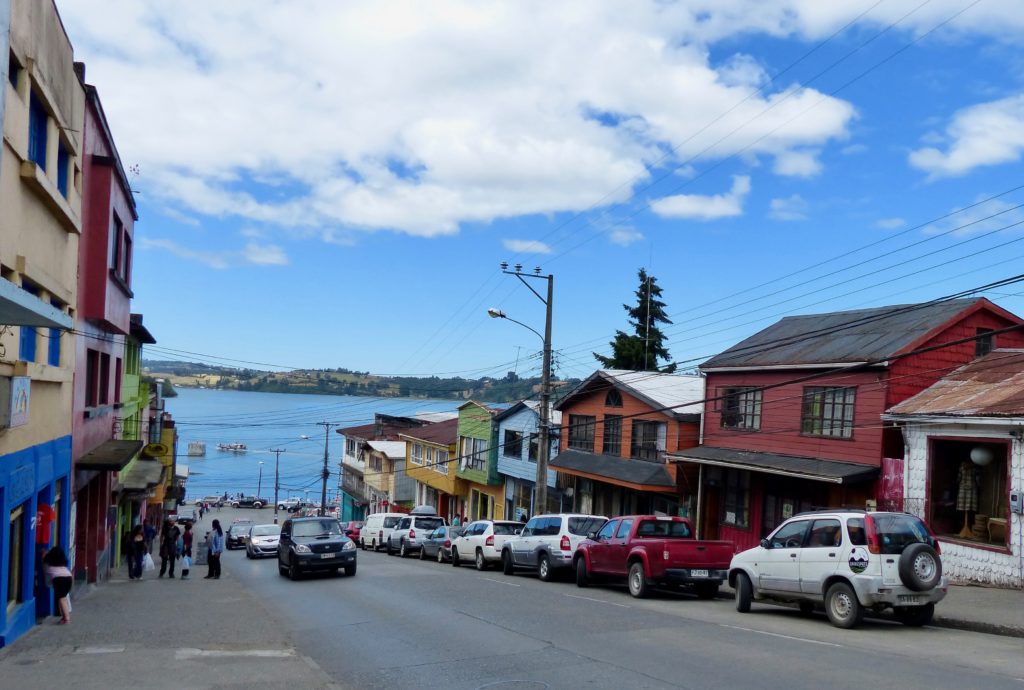
Waving to people in the palafito restaurants.
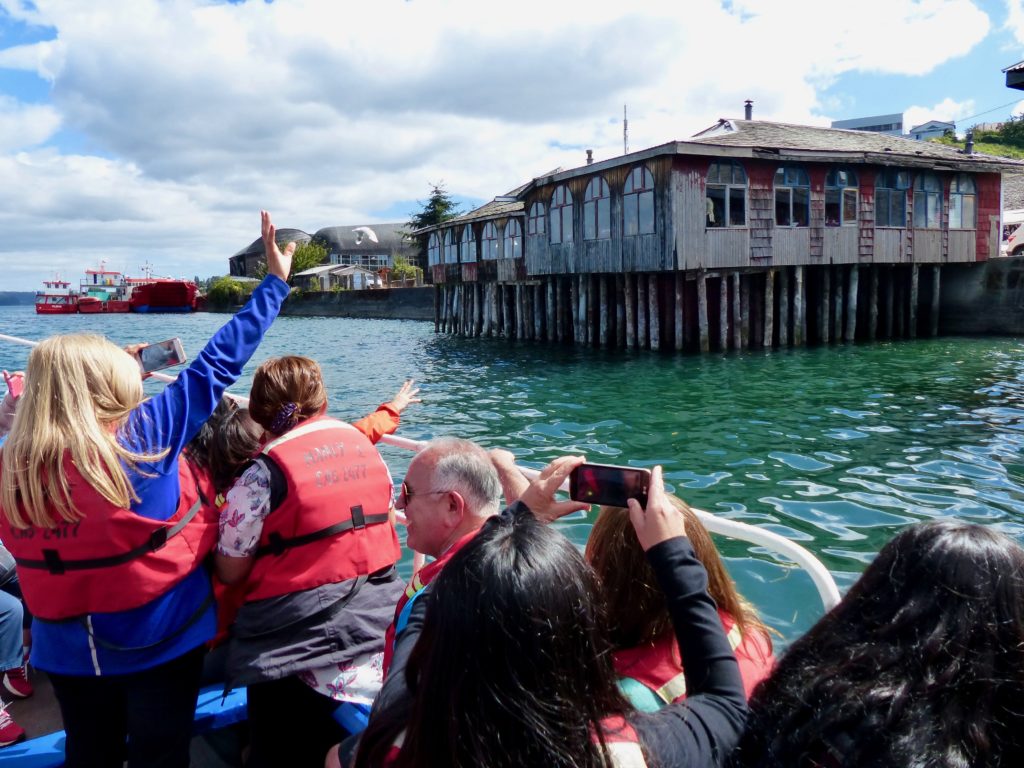
After a stroll through Castro’s main plaza – which was lively with buskers, food vendors, backpackers selling jewelry, stage performers, picnicking families, and even a police officer demonstrating his dog’s tricks – we took off to check out the Iglesia de Santa María in the small town of Rilán.
Records of a church on this site date back to 1760, but the existing building was constructed in 1920. We had to pay a small entrance fee, which was supposed to help defray the ongoing costs of restoration. The caretaker let me climb the stairs to the balcony. Seeing the ceiling up close, I felt the influence of the archipelago’s shipbuilders on the construction of these churches. It felt like an upside-down ship hull.
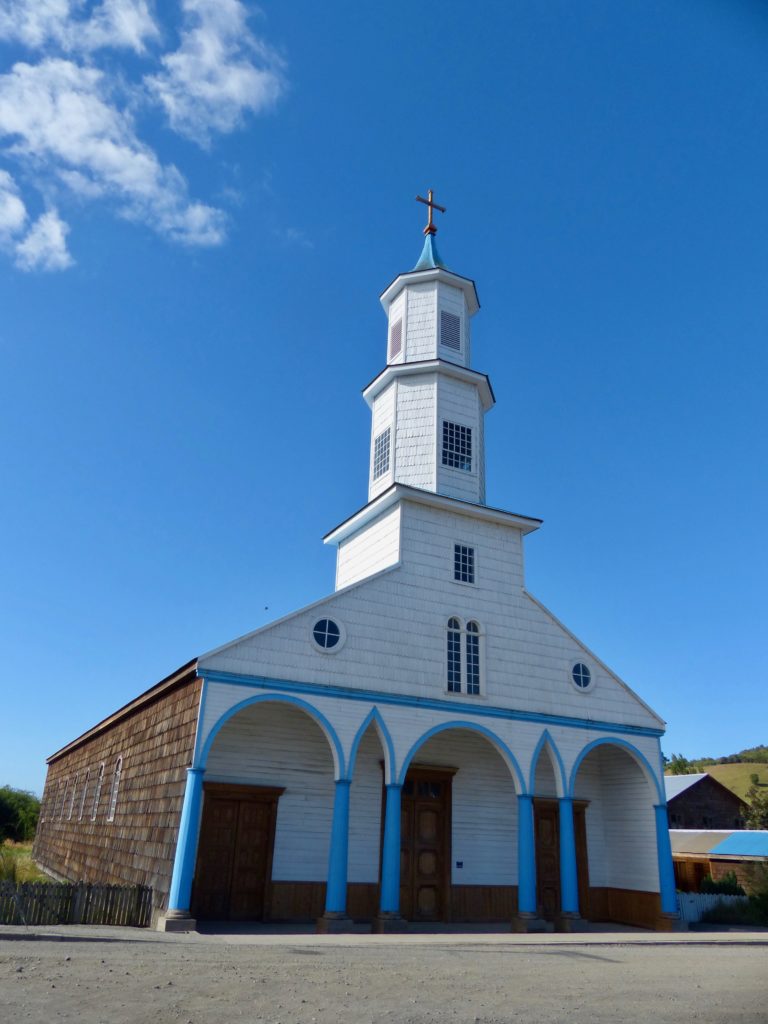
Parading through the churches and snapping photos, it was easy to forget the real purpose of these historic structures. Most continue to offer mass every week and otherwise meet the spiritual and pastoral needs of the community. This group of mismatched chairs circling a music stand helped me visualize a choir filling the sanctuary with music as worshippers crowded on to the hard wooden pews.
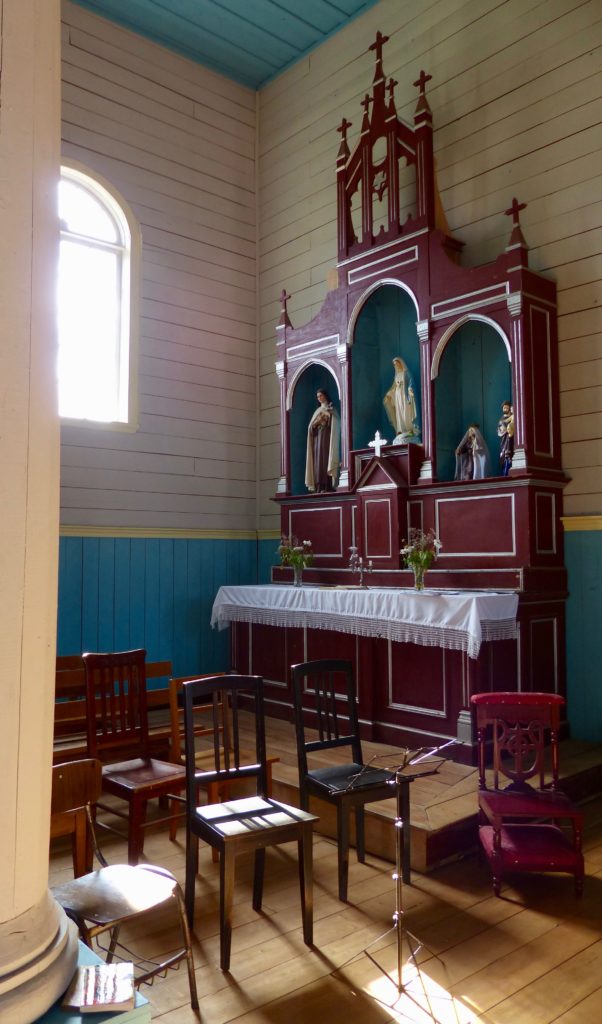
Driving back to our cabins, I couldn’t get over the gorgeous landscape. Every rollercoaster drop and hairpin turn of the road revealed another postcard-perfect view. Afternoon sun bathed the hillsides in glorious hues of gold and green with ubiquitous glimpses of the coastline and the denim-colored sea. I wanted to shout out the window to the fluffy sheep and fat grazing cows, “Do you know how lucky you are to live here?”
